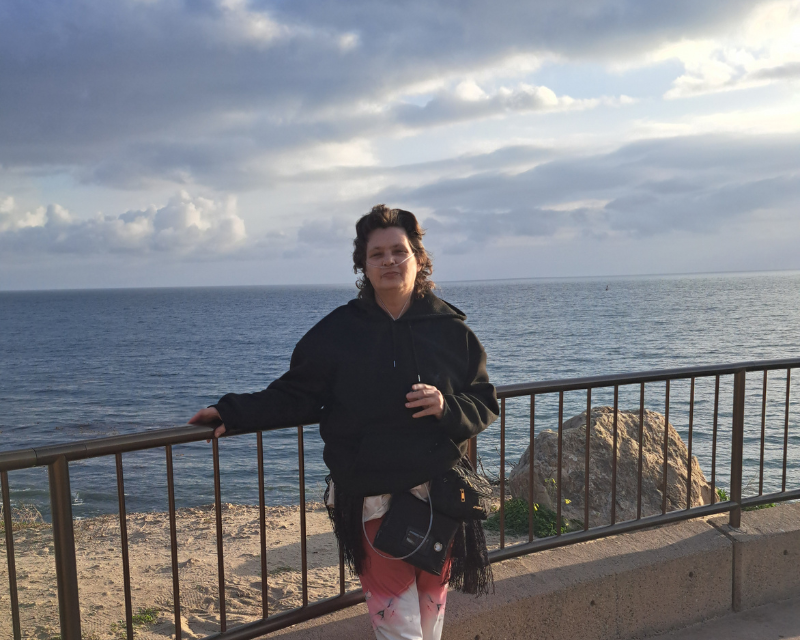
On July 12, 2018, Polaris released its newest ground-breaking report On-ramps, Intersections, and Exit Routes: A Roadmap for Systems and Industries to Prevent and Disrupt Human Trafficking. This report discusses how human trafficking business models attempt to intersect with and use legitimate businesses like financial services, social media, hotels & motels, transportation systems, health care, and housing and homelessness systems to further their operations in very specific ways to recruit and exploit victims. The report also explores how victims and survivors come into contact with those same systems to break free and rebuild their lives. We felt that understanding these intersections could offer a new type of roadmap forward for how businesses could play a major role in closing these loopholes for traffickers, and opening more doors for survivors.
The ‘Intersections’ report is the follow-up to The Typology of Modern Slavery, which, for the first time, catalogued the 25 primary types of human trafficking business models in the United States by analyzing over 32,000 potential cases from the National Human Trafficking Hotline. If the ‘Typology‘ report examined what human trafficking looked like in the U.S., the Intersections report takes on how to stop it.
In fact, the answer lies with people you wouldn’t immediately expect. An anti-money laundering professional. A local hotel concierge. Your next Uber driver. Facebook. Indeed, this report broadens the circle of who is considered an influential actor in the anti-trafficking field. It’s no longer just anti-trafficking NGOs or law enforcement. Private and public-private businesses have an incredibly unique and powerful role to play. This report focuses on the private and public-private sector because fighting human trafficking will require participation by business and industry partners with resources at a comparable scale to the size of the problem. The fight against human trafficking requires active commitment and effort on the part of these businesses that unwittingly, but regularly intersect with traffickers, victims, and survivors.
The Intersections report uses this matrix to visualize these intersections.
The Intersections report is a collection of the ideas and personal narratives shared with us by survivors of trafficking. The inclusion of diverse survivor voices was a central part of our approach to this report. Through a nationally distributed online survey and focus groups throughout the country, supplemented by data from the National Hotline, we learned from survivors about how their traffickers leveraged legitimate businesses and what recommendations they had for what could be done to make things better. Insights from approximately 130 different survivors have contributed to the report!
Social Media
“Technology is being used [to hurt us]. Why can’t we use technology as a way to get resources to survivors?”
Most people think only sex trafficking have recruitment origins online. In fact, supervisors in traveling sales crews (a common labor trafficking type) may post flashy pictures on social media depicting stacks of cash and a party lifestyle to try to entice new victims to join their crews. Survivors are incredibly saavy and may use social media to coordinate their own escape by communicating through private messages with friends, family, and service providers. Once out of their situations, survivors rely on social media spaces for their continued safety, to rebuild their social relationships, and to connect, and share solidarity with other survivor leaders.
How can social media platforms help?
-
Implement innovative safety features the could help survivors stay safe, such as disappearing messages and passcode protected folders or photo albums, as well as defaulting to “opt-in” options instead of requiring users to “opt out” when rolling out new features.
-
Enable targeted ads for anti-trafficking organizations to intelligently offer sponsored posts connecting potential victims to resources and help.
-
Learn more about social media’s intersections here.
Financial Services Industry
“Everything was put in my name with [my trafficker] as a co-signer, since [my trafficker] used a fake name, when I escaped, everything faulted back on me.”
Almost all survivors in Polaris focus groups reported that their trafficker(s) would use a victim’s name on a bank account or credit card to avoid putting their own name on paper. This tactic not only hides the potential financial crimes committed by the trafficker, it has lasting and devastating effects on survivors who have their credit and banking histories ruined. Traffickers can hide their criminal profits through a registered business because of a loophole in the U.S. that doesn’t require business owners to disclose the people who actually make money from the business.
How can the financial services industry help?
-
Assist survivors in rebuilding their economic portfolio by providing access to financial services, such as simple bank accounts, reasonable credit cards, or microloans to help build credit.
-
The federal government should enact legislation requiring every registered business to disclose their beneficial owner, and that, at the very least, that information should be available to law enforcement.
-
Learn more about the financial services industry’s intersections here.
Hotels & Motels
“If I would have seen [the Hotline number] all the times that I just got beat up… I mean, I’ve had some really bad experiences in hotel rooms, and if I had seen something like that I would have called it.”
The National Human Trafficking Hotline has received 3,596 cases of human trafficking which have a connection with a hotel or motel business. Beyond sex trafficking in escort services, sales crews can utilize hotels to house victims during travel, and housekeepers working for a hotel subcontractor can also be victims of labor trafficking.
How can hotels and motels help?
-
Ensure the National Human Trafficking Hotline is posted or available on-site (including within hotel rooms) to alert victims that help is available.
-
Adopt policies to directly hire employees whenever possible. The more removed or tenuous an employment relationship is, the more vulnerable workers are to abuse. If it is not possible for a business to directly hire all personnel, Polaris strongly recommends hotel management thoroughly research subcontractors’ recruitment and business practices and create enforceable oversight systems.
-
Learn more about hotels’ and motels’ intersections here.
Transportation
I don’t drive so I relied on public transportation when I left my trafficker and having access to it where I lived helped economically with me leaving the situation.
Traffickers in sex and labor trafficking use long-distance buses like Greyhound, trains, rideshare apps, and airlines to initially transport victims into their trafficking situations, as well as move them throughout the country during their exploitation. In Polaris’s survivor survey, 54 percent of survivors noted that access to transportation was a barrier to their leaving their situation.
How can the transportation industry help?
-
Provide travel vouchers or points donations to anti-trafficking organizations to help survivors actually get free from their trafficking situations and to critical resources they need to rebuild their lives.
-
Learn more about transportation intersections here.
Health Care
“Since I was often taken to different doctors and to the ER to treat trafficking related injuries, I wish that someone would have taken me aside and asked those [screening questions] or even asked me if I was okay…”
Sixty-nine percent of survivors in Polaris’s survey stated they had access to health services at some time during their exploitation. Survivors in Polaris focus groups described feeling discriminated against or judged by health care professionals during their trafficking. While greater empathy and awareness is improving in this field, this poor treatment has had lasting effects on some survivors’ trust with their health care provider.
How can the healthcare industry help?
-
Create and implement a trauma-informed care and training protocol for all health facility staff, bolstered by posting the National Hotline number where it can be discreetly accessed by at-risk patients.
-
Urge Congress to pass the Stop, Observe, Ask, and Respond (S.O.A.R.) to Health and Wellness Act to reauthorize and expand funding to ensure that health care and related professionals have access to comprehensive training and technical assistance to help trafficking victims.
-
Learn more about the healthcare industry’s intersections here.
Housing & Homelessness Systems
“When I got out of the trafficking I was put immediately by state patrol into a domestic violence shelter. It was the only shelter where I was from. I was their very first trafficking victim.”
Emergency shelter makes up 47% of all crisis requests to the National Hotline but is sometimes the most difficult service to secure – especially for survivors of labor trafficking, male victims, and victims who identify as LGBTQ+. Some trafficking business models such as residential brothels, and even labor trafficking types which rely on migrant workers, rent private homes to house victims and facilitate their exploitative businesses.
What can housing and/or homelessness systems do to help?
-
Include victims of human trafficking as a target population for domestic violence shelters. When a trafficking-specific shelter is not available, domestic violence shelters are the best suited out of any other institution to fill the gaps. Domestic violence shelters will need additional resources to do so, and some will need to revamp certain policies to meet the needs of both populations.
-
Include basic rights and protections into standard lease agreements explicitly protecting survivors of human trafficking from housing discrimination, eviction, or other punishment based on their status or history as a victim of crime.
-
Learn more about housing and homelessness systems’ intersections here.
We were so proud to unveil this research to the world through a panel event on Capitol Hill in Washington, DC last week and streamed the event on Facebook Live, too! Nationally renowned experts in some of the above industries joined us to discuss how their industries are advancing anti-trafficking goals, supporting survivors, and most importantly, the opportunities for further improvement.
Traffickers are depending on the inaction from businesses to continue using them with impunity. Survivors are depending on those same systems to recognize them and offer a pathway to recovery. When we released the Typology, we said it would offer a roadmap for taking the next steps in creating a world without slavery. The new Intersections report outlines those next steps. But we need to take them together.
If you’re a professional in any one of these industries and want to learn more about working with Polaris, please contact corporateengagement@polarisproject.org.


